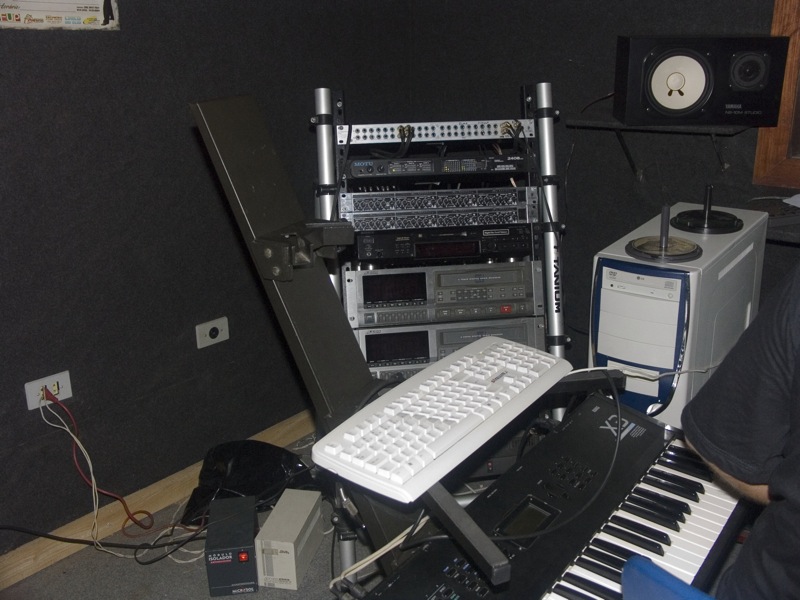
I had the opportunity to go visit a recording studio here in Teresina last night. The owner/operator's name is Isaac, and he was gracious enough to power everything up and show us (me, my wife, and her father) around the place.

It was a bit surprising to me to walk in and see a
Mackie 32 channel, 8 bus mixer sitting there. Not because one does not need a mixer, but because of the expense involved. Electronics here in Brazil are expensive because most of them must be imported, which at least doubles (and, as in this case, sometimes quadruples) the cost. My surprise was due to the fact that this mixer (and, arguably, a better one) is in the recording software on the computer.
At some point, though, he mentioned that the board is necessary, if only to convince musicians that this is a good studio to record in. The disclaimer here is that sometimes when dealing with technical explanations, translation gets very difficult for my wife.
He paid the equivalent of $12,000 (US) for this mixer. I looked on Musician's Friend, and the current price on this item is about US $4,000. The reason for this difference is the import fees/taxes mentioned earlier.

Here is a shot of the other gear in the studio. He is using a
Motu 2048 for his A/D converter, and Nuendo for the DAW software on the computer. He mentioned that he was using
Pro Tools, but found it to limiting in some way (though, I am not sure why). Above that unit is a patch-bay, and below it are two Behringer four-channel compressors, followed by a Sony Mini-Disk recorder, and two Alesis ADAT recorders. The two boxes on the floor are power inverters, as the power here is 220, and the gear likes that good old 120.
No idea on the specs of the computer, but, by US standards it seemed pretty slow (but they don't care as much here about that sort of thing). That is a Yamaha NS-10 on the wall, and in the foreground is a Korg X3 keyboard.
A couple of general observations: I have never been in a studio where the recording area was so dead. The buildings here are only made out of brick, which does not seem to do much for sound insulation, so they put foam on the inside to keep the sound levels appropriate for neighbors. The mix room was this way as well, but to a lesser extent.
The ability to make money back on your gear here is less here than in the States. As mentioned before, gear costs more here. He only charges about $1400 (US) for a 10-track CD, though. That makes for a long time before seeing a return on investment.
That is it for this “field trip,” but I know there are some other studios here in town, and I would like to visit them. Maybe I will get the chance, and if I do, you will hear about it here. In the meantime, if you have questions, I will do my best to answer them.























